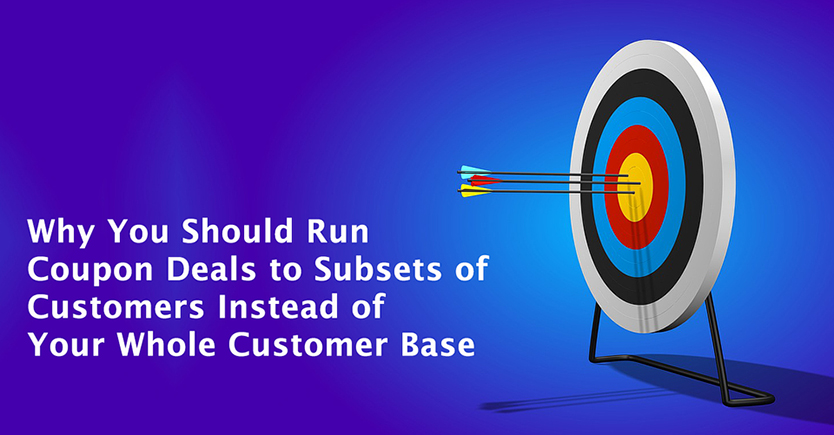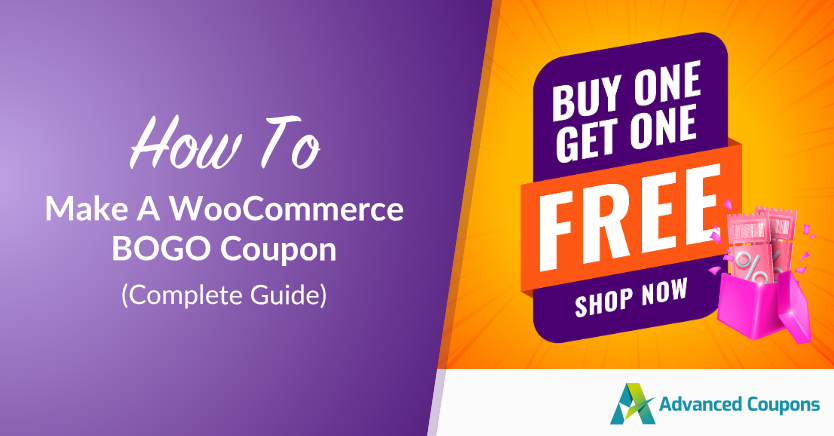
Market segmentation. Target marketing. Marketing to subsets or subgroups.
If all or most of those words aren’t part of your overall coupon marketing plan, we need to talk. Actually, we’re going to talk anyway, so if you’re interested in improving your bottom line with some tried and true techniques, pull up a chair.
To provide a clear picture, I’m going to present a fictitious case study. In this study, the store owner will be a marketing newbie in general and have no experience at all when it comes to coupon marketing. They have a great store, great products, and a killer brand, but sales are stale.
They’ve pretty much parked their store on the world wide web and expected customers would trample each other to get through their virtual door. And you know what? That just isn’t happening.
We’re going to help them change that.
The Store: A Case Study
Yes, we’re calling it The Store. My creative process is glitching, and that’s the best I can come up with at the moment. Our store sells fashion accessories. If you’re at all interested in fashion, you know what I mean by “accessories.” For those who don’t have a clue, accessories include an array of things like gloves, handbags, hats, ties, jewelry, suspenders, belts, watches and more.
Who Make up your Subsets?
So, we have lots of great things to do some coupon marketing on. Our store owner is thinking of creating an email campaign to his entire list. He’s going to offer a 10% coupon to every one of his customers against anything in his store. Now, I’m not saying this is a bad thing to do. Not at all. But if he fine-tuned things, got more granular, there’s a very good chance this campaign would be more successful.
So let’s get granular. Who make up The Store’s subset audiences? Who should the owner target? Does he just break it into male and female audiences? No. First, unless he has his customers filling out an extended user profile when they sign up, there’s a good chance he doesn’t have that info. Unless he plans to manually sort by their name, and since names aren’t always gender-specific, that could be an issue.
Note that he can collect that sort of data at sign up if he chooses to. And there are some excellent plugins that can help create custom customer profiles to keep track of it.
Let’s Get Regional
We talked about seasonal coupon marketing in another article, and part of that’s regional. What’s going on in any given season, in any given region The Store sells to? Well, it sells to Australia and it’s January. January in Australia means Australia Day. The Store sells beach totes, flip flops, and sunglasses. January in The Store’s home country means frigid temps and snow, so unless there’s an airplane involved, they’re not thinking of those things, right? Wrong! The Store should have coupons winging their way to its Australian customers.
The coupons are on their way to all Australian customers to use against any preselected, appropriate merchandise.
Let’s Use Customer Behavior
We’ve talked The Store into using an email marketing automation tool called Drip which lets you craft email campaigns based on the pages your visitors view. There was some push-back at first since the owner compared this to stalking his customers. We convinced him otherwise.
Think of it this way. If you go into any properly staffed brick and mortar store, what happens? Someone is paying attention to you. Linger longer over something specific, they know it. If you keep circling back to something, they know it. And while they might let you go on doing this for a while, eventually, they’re at your shoulder—like a little devil—asking “Would you like to try that on?” You try to resist, but you can’t help yourself.
Before you know it, you’ve tried it on, you’ve purchased it, and you’re heading home. But The
You know if they lingered on a certain product page. You know if they keep circling back to it. If you have a cart abandonment plugin, you also know if they put it in their cart, but ended up not completing the transaction.
You know what The Store is doing now, right? After a set amount of time, they pull a list of anyone who engaged in this sort of behavior. They’ve automated the process in Drip, which allows you to customize a time delay before the coupon is sent. They’re also using Google Analytics, which provides an even broader picture of customer behavior. Diabolical, but effective.
Let’s Use Interests or Prior Purchases
Now that The Store is fully onboard when it comes to tracking their customer’s behavior, the sky is the limit when it comes to their coupon marketing. They’ve realized there are more subsets and target audiences than they ever could have imagined.
They carry a line of very expensive handbags, the work of an up-and-coming Toronto designer. That category gets a lot of repeat traffic, and a lot of store visitors have saved several handbags to their favorites folder. The purses are fabulous but very expensive. Now that the owner is a marketing mastermind, he knows exactly what to do.
You do too, right? You’ve realized that anyone putting a handbag in their favorites, or consistently obsessing over a particular item is part of a subset. This is much like the behavior listed above, but we’re being more granular. Because, where before we would have sent out a catch-all sort of coupon, now we’re targeting the desires of this specific group.
Something, likely the dollar amount, is stopping them from making a purchase. Would they buy that purse if they could get it for 10% off? 25%? 30%? Our store owner will never know if he doesn’t try. So he picks a discount that he and the designer can live with and offers a targeted coupon.
Part of the beauty of this is the receiver of the coupon doesn’t know The Store has been tracking them. For all they know, every single one of its customers received an email informing their valued customers that they had a handbag event running.
You’ll be thrilled to know The Store’s handbag campaign was successful!
But what about prior purchases?
This one should be easy. A little bit of analysis into your repeat customers buying habits should provide some clues. But don’t limit it to repeat customers. Recently, The Store sent 15% off coupons to everyone who had purchased suspenders in the past. For bowties, of all things. It seems the two go together. It went so well, they’re planning to do something similar again.
Let’s Recap
The Store’s sales have bumped up considerably. A large part of that has to do with the fact it’s become very strategic in its coupon marketing. While they still do offer blanket store coupons, they’ve seen the light when it comes to targeting subsets of their client base.
We mentioned three specific types of audiences or subsets:
- Regional
- Behavioral
- Interests or Prior Purchases
Are there any other groups you could target market to? Absolutely! Be creative. See what works for your store. Depending on what kind of information you have on your customers, you can also target by demographics.
However you do it, be sure to implement targeting subsets into your marketing campaigns. And check out some of our other coupon ideas too!
Here’s hoping your store becomes as successful as The Store has become!




